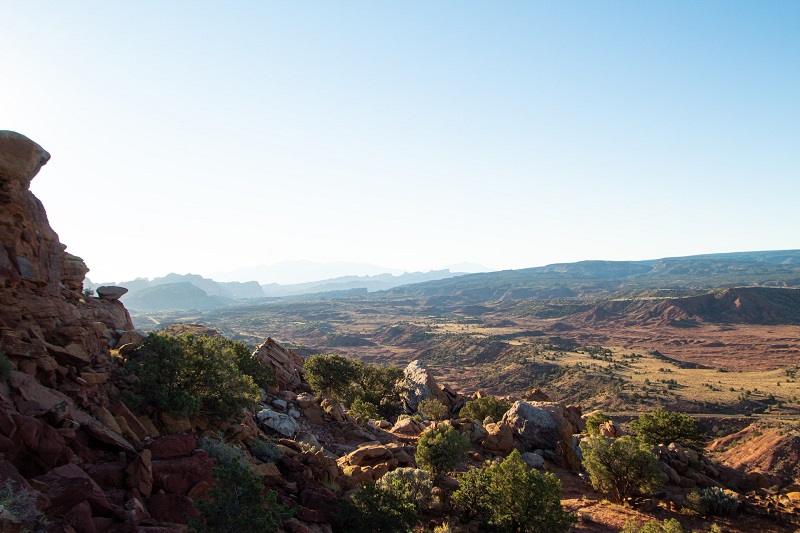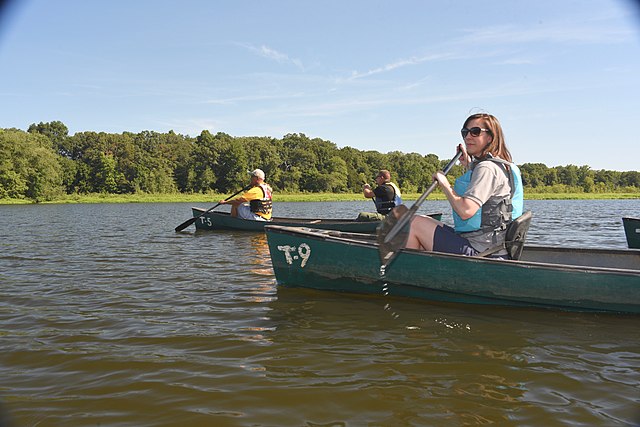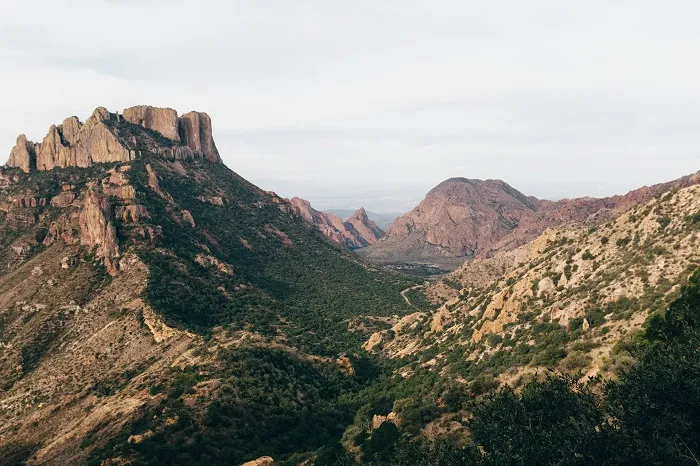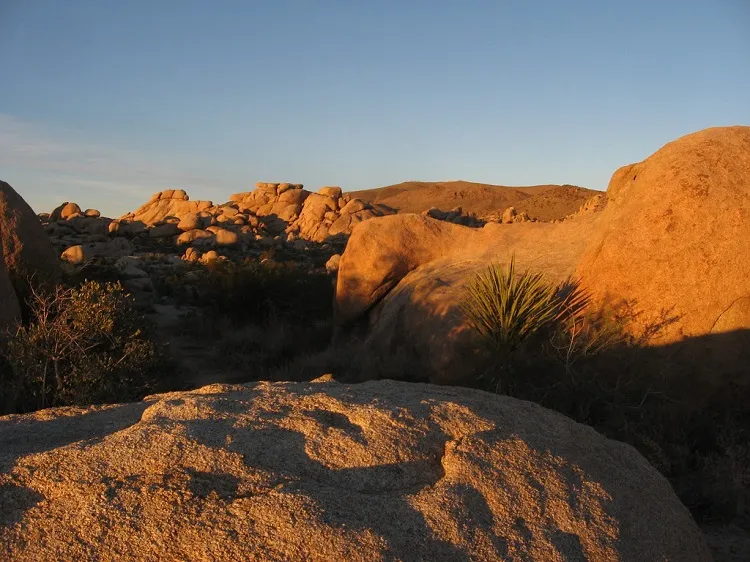
National Parks are places that are legally protected by the government and kept intact for future generations to enjoy. All Americans, including you, own them.
State parks range in size and are managed by distinct states. State parks range in size and are managed by distinct states. State parks provide a larger choice of outdoor activities like hiking and camping, but national parks have tighter limits to safeguard the environment.
State Parks vs. National Parks

State parks and national parks differ primarily in that state governments are in charge of state parks while the federal government is in charge of national parks. The size, popularity, and cost to park visitors are other contrasts between the two parks.
The distinctions between state parks and national parks have much more to do with how visitors are treated than with their purpose or owners. For instance, whereas state parks frequently have less land but more services, national parks frequently have a greater variety of paths and opportunities for exploration. But a lot depends on the place and the state.
While both national and state parks were established to protect the area and its natural ecosystems, and both typically have one or more distinctive features like a distinctive landscape or landmark (mountains, deserts, parries, lakes, waterfalls, hoodoos, caves, etc.), the main distinction between the two is who is in charge of these lands and how much of them are protected.
State parks are owned by the state governments, as opposed to national parks, which are controlled by the federal government. This decides how much money they receive and who has the last say over what happens to the lands. All Americans have a right to enjoy the property and a say in how it is utilized and maintained because national parks are public lands that are maintained using funds provided by taxpayers.
State governments manage state parks, and the general public has little influence over them. For instance, if the state needs the money, it may decide to sell a state park. National parks, which were established to protect the land, its natural inhabitants, and its beauty for all future generations to enjoy, are public lands, so that is not possible.
National parks are significantly more protected from over-development, although state parks are often less expensive and include additional facilities like campgrounds and trails. Other advantages of visiting state parks include the fact that they are frequently less crowded and much closer to home given the abundance of possibilities.
Following are many characteristics that set a state park apart from a national park. Just a few of the distinctions between these two park kinds may be seen in elements like who controls the park, how big the area is, and what the land is generally utilized for. We’ll examine the differences between state parks and national parks in more detail below.
Ownership of the Different Parks and Funding

The most noticeable distinction between national and state parks is who owns them. National parks are governed by the federal government, as one might anticipate. Additionally, federal taxes play a significant role in funding the maintenance of these parks. Because the organization is bigger and needs more paperwork and permissions, major changes are also harder for the parks to implement. State parks, on the other hand, are state-owned.
State parks, unlike national parks, are not supported by federal taxes. Instead, they must find ways to generate the money required to keep the park in good condition. As a result, even residents of the state where the park is located have less influence over any modifications that are made there.
Size and Land Use
State parks often aren’t as big as national parks. These regions are built around the idea of preservation, which states that the environment should be kept as natural as possible to safeguard the local plant and animal species. Additionally, the goal of national parks cannot be altered without approval from the American public.
State parks are less expansive and easier to modify to meet local needs. Despite having certain natural resource preservation goals of their own, they also have more space to offer amenities like cabins, plumbing, and electricity. Additionally, since the state determines the land’s use, it has the option of selling it if necessary.
Cost To Visitors

In general, a variety of factors can influence how expensive staying in a particular park will be. Are you going for a day trip or are you staying the night? You’re bringing what kind of vehicle, exactly? Are you planning to camp in an RV or a tent that needs plumbing hookups? Keep each of these requirements in mind as you plan your journey.
National parks are typically more expensive than both of them. Nevertheless, going to a national park is still significantly less expensive than traveling to a theme park or resort. There are usually entrance fees for national parks that range from $20 to $35 per vehicle.
However, if you purchase an annual pass, national parks can be much less expensive. Expect to pay between $35 and $60 each year for an annual pass to a particular national park. Furthermore, a special annual pass costs roughly $80 and is available for those who plan to visit several national parks. It also grants access to additional national recreation zones and a huge number of national parks.
Consider this: for about $80, you can explore every national park in the US. Although it doesn’t cover the cost of gas or airline tickets, it is still less expensive than paying membership dues or admission fees on a state-by-state basis.
In contrast, going to a state park may be substantially less expensive. Some state parks don’t even charge admission, while others have prices ranging from $2 to $16. Nevertheless, the cost of a state park yearly pass can greatly vary. While some relax for only $10 a year, others cost about $200. Usually, the state as a whole and the specific park will set this charge.
What To Expect From The Different Parks
I’ll use instances from particular parks to show the distinctions between visiting a state park and a national park. I’ll be exploring Yosemite National Park in California. I’ll use the Silver Falls State Park in Oregon as an illustration of a state park. Please keep in mind that not every national or state park will offer the same experiences and amenities.
To begin with, Yosemite National Park is significantly bigger, offering visitors 1,200 square miles of terrain to explore. Reservations are usually necessary for anyone who intends to spend the night at the park due to its popularity.
In addition to tent campsites, the park also provides group, equestrian, and RV parking. RV campsites do not have connections to water or electricity, though.Although California is normally a warm state, you might discover that the nights there occasionally become a little chilly.
Yosemite National Park is enormous, yet Silver Falls State Park is only a little larger than 14 square miles. Even though it is much smaller than the national park, there is still plenty to keep most people occupied. Silver Falls does have a lot of campsites with water and electricity hookups compared to Yosemite. Additionally, they provide tent sites, group sites, chalets, and temporary horse facilities. At Silver Falls, there are fantastic walks, picnicking opportunities, an amphitheater, and a playground.
Why Are There State And National Parks?
Conservation is the primary goal of both state and national parks. In essence, that means preserving places that are significant to the state or the country because of their natural, historical, or cultural characteristics. These areas are intended to be safeguarded. Whichever group values the land more will determine whether it is protected by the state or the federal government.
Generally speaking, national parks are significantly larger areas. As a result, the nation rather than the state is now responsible for their maintenance. Additionally, compared to something like a 14-square-mile state park, it would be more challenging for one state to oversee an area of 1,200 square miles or more. The inclusion of any proposed new national park requires congressional approval.
While adding a park to a state park system is typically simpler than adding one to the national park system, the location still needs to be of great significance. The entire state must be affected by that significance, not simply one town or county.
State Parks Vs. National Parks: Which Is Better?

The response to this question is primarily influenced by the visitor’s preferences. There is often a lot more open space and interesting places to explore in national parks. However, they can also be congested and have a restricted supply of water and electricity. You may find that you enjoy national parks if you have a strong desire to explore and don’t mind roughing it for a bit.
It is possible to camp away from a built campsite by pulling over to the side of the road. This is known as dispersed camping. State parks are less likely to allow you to do this than national parks or forests, though it depends on the state.
State parks, on the other hand, can offer a slightly more relaxing experience. State parks are more likely to be enjoyed by those who prefer to have hot showers, flushing toilets, and access to power.
As they tend to be nearer to populated areas where you may explore local dining, shopping, and entertainment, these parks are also frequently a better option for individuals who want more to do outside of the park itself. As an illustration, the Grand Canyon, one of the country’s greatest natural wonders, is genuinely in the middle of nowhere. Before getting there, you must travel through the desert for several hours.
National and State Park System Exceptions
The state park administration procedures differ between states. While some states have a more sophisticated system of state parks, others might keep things simple. Nevertheless, Texas and California are two states that stand out when it comes to how they manage their state parks. If you live in one of these states or simply want to learn more about what makes them unique, keep reading.
Texas
Advanced state park systems are not available in every state. You might not be able to find parks with facilities like electrical hookups in some states. There might not even always be a ranger on the property. Texas is not one of those states, though. Texas is a sizable state with a sizable area set aside for state parks.
Unless they make a lot of effort, persons who live in the state typically have the easiest access to these parks. As a result, Texas state parks require a lot of maintenance for visitors to get the most out of them. Texas parks typically provide all the comforts of home to make campers happy. They are also set up such that campers are given to certain places rather than having to look for a good spot.
Additionally, a yearly pass to use the Texas state park system only costs roughly $70. That certainly isn’t too much money to spend on all the outdoor activities available when compared to some other states. If you’ve never gone camping before in Texas, you could discover that it’s rather different from other places. Check out our post on camping in Texas to get you ready.
California
California is a large state like many others; therefore it has many state parks in addition to many national parks and monuments. California’s state parks differ in several ways, including their sizes and the services and attractions they provide.
There are no annual passes available for folks who want to camp at the parks, I discovered as I researched the California State Park system. However, there are multiple-day passes available for various types of cars and tourists.
It is advised that visitors who wish to stay at a California state park make reservations. Depending on the park you choose, as well as whether you’re tenting, RVing, camping with a big group, or using horses, there may be fees associated with camping. Floating campsites, cabins and yurts, and cottages are just a few of the unique camping options California has to offer.
Conclusion
It is important to know the difference between State Parks Vs National Parks before you plan your next trip. Hope you have gained some knowledge about State Parks Vs National Parks from this article.
